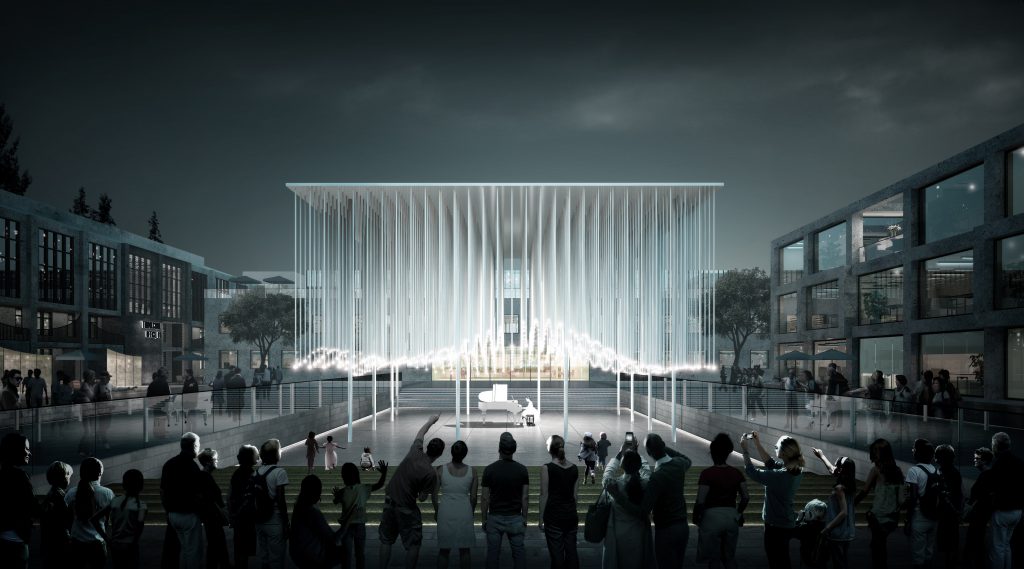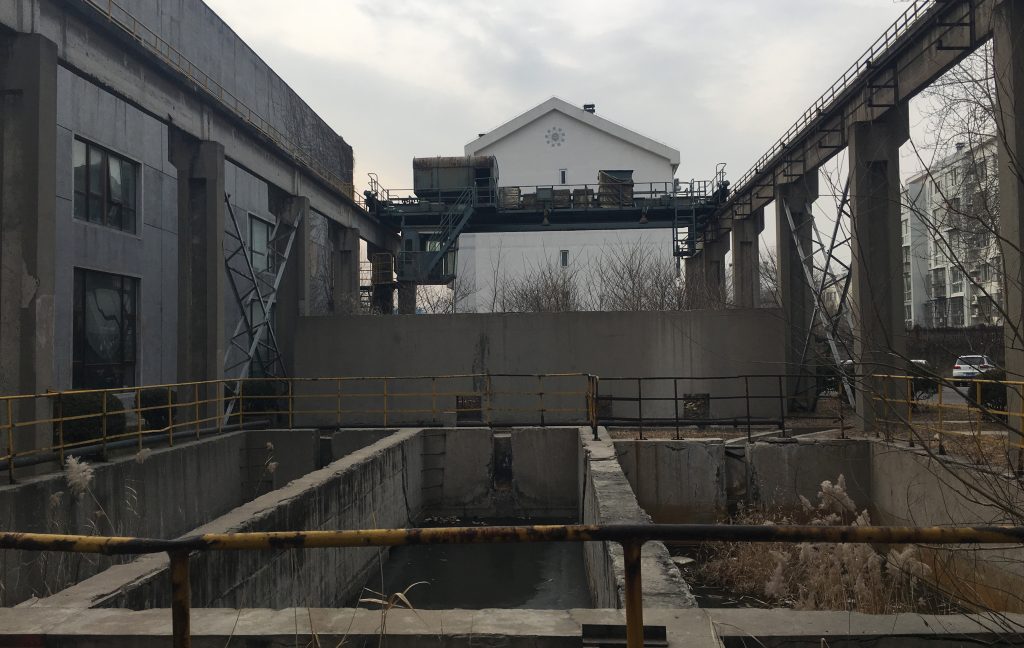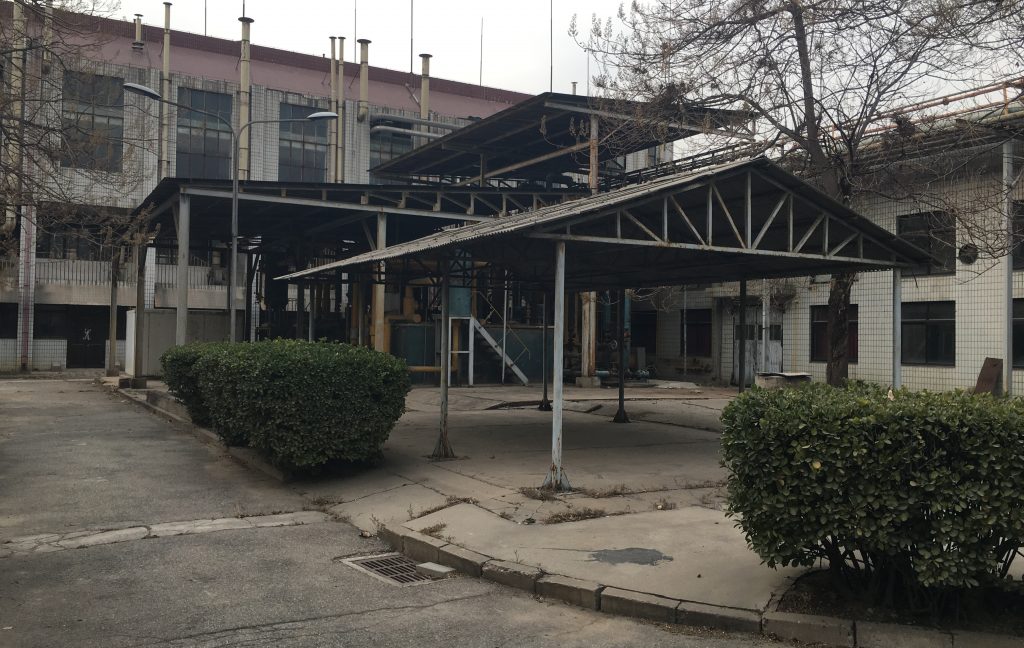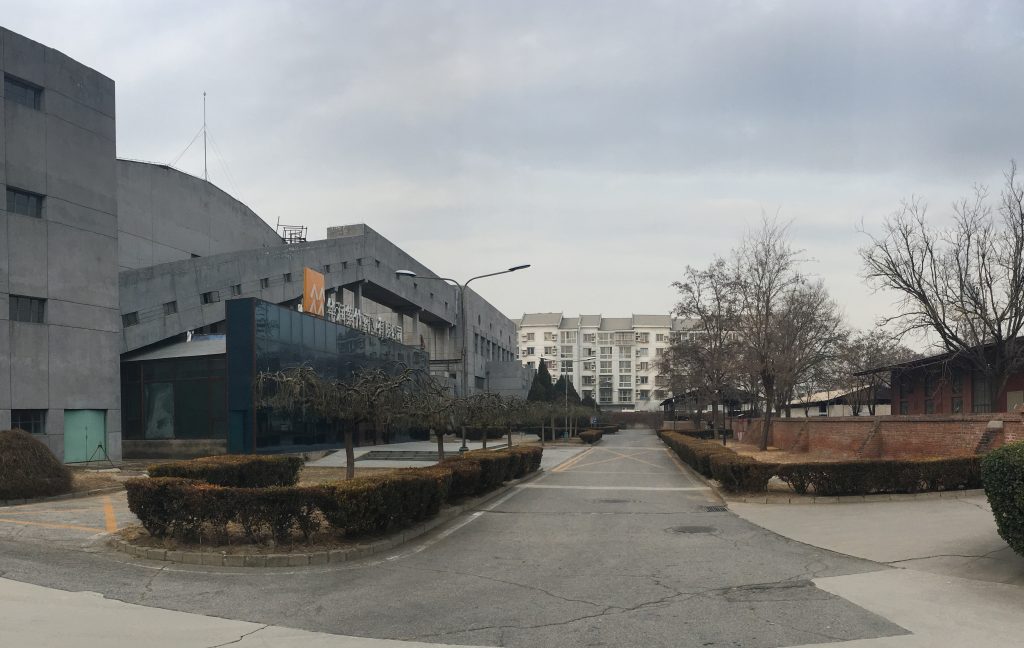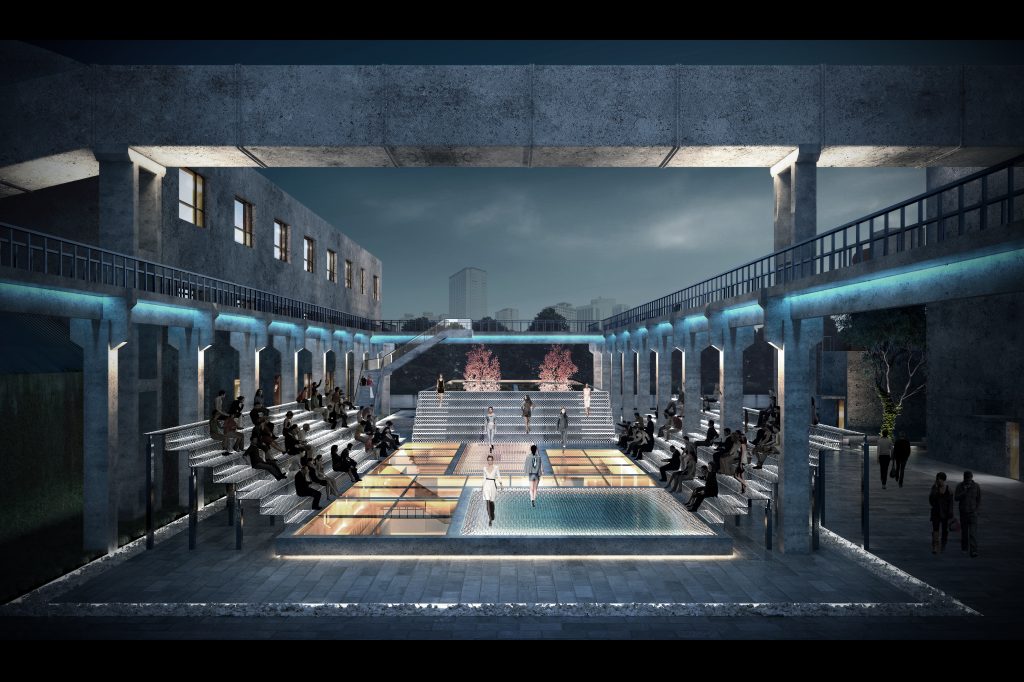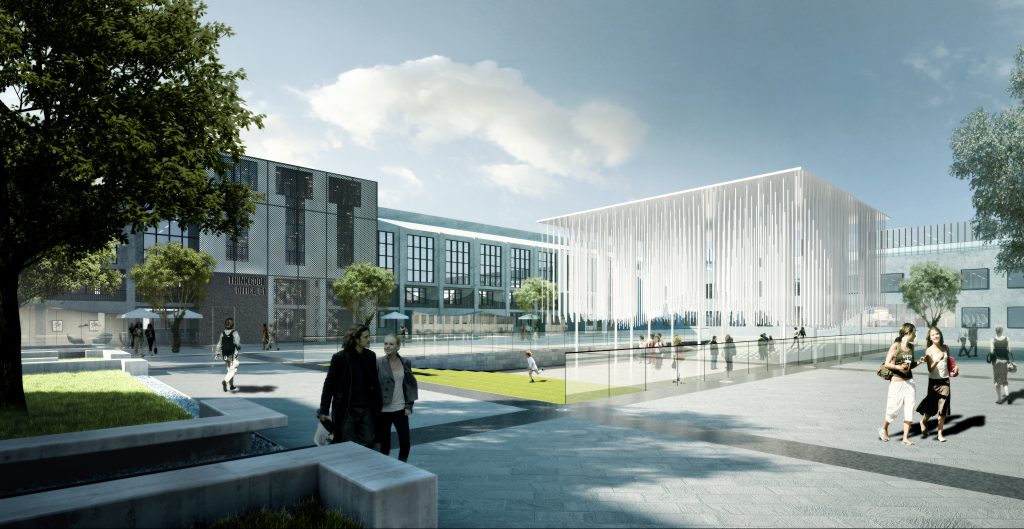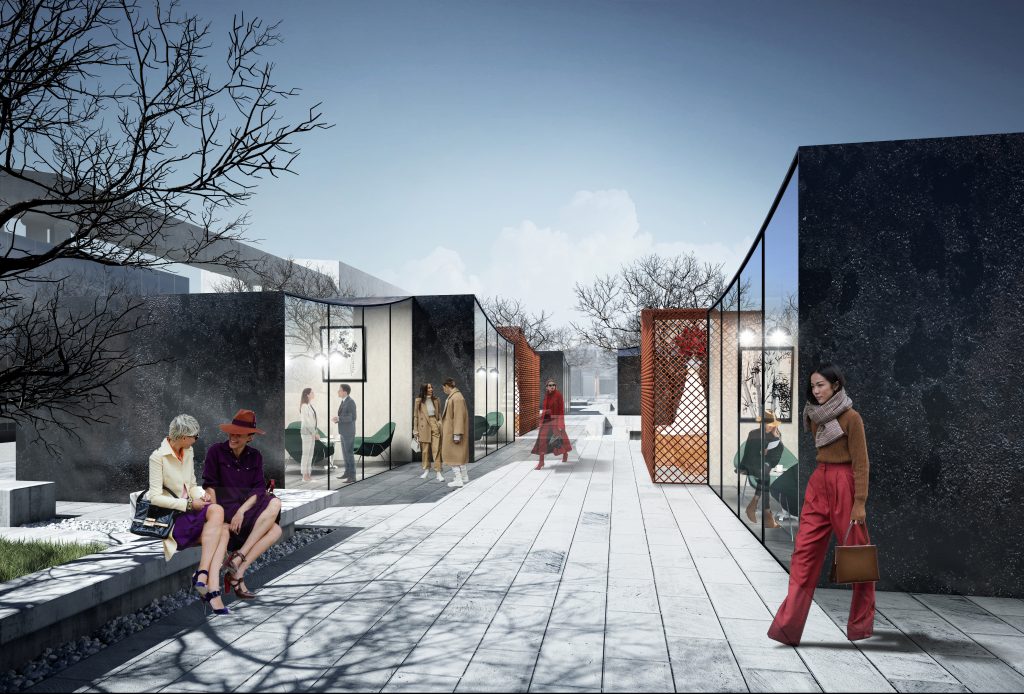STAGE PAVILION
Client: Thinkool
Status: Design Proposal
GFA: 22,720 SQM
Location: Beijing, China
Scope: Masterplan & Architecture
Stage Pavilion is a project of complex renewal and adaptive re-use of an abandoned industrial quarter. The plot occupies 2.77 ha and is located in Beijing, China.
The goal was to reactivate the area for public use and add new quality to existing architecture, while maintaining the nature of the site and preserving its identity. Adding art and cultural programs beside offices and workshops was one of the key strategies for opening up and activating the site. The neglected plot was transformed into a new space – a creative hub, dedicated mainly to fashion industry with offices, workshops, artists’ studios and exhibition spaces.
The public spaces were designed to play the key role as activating zones. They defined the site architecturally and functionally as places of everyday gathering, cultural activities, leisure and commerce.
The main square, a rectangular courtyard (75x52m) had been defined by three surrounding buildings. The west building, due to its unique decorations, remained the same character, with modern elements added to the facade. The other two buildings were newly designed ones based on the old structure. The architecture was simple and pure, accentuating the industrial background. Rhythmical facade divisions referred to existing structural grid and the materials were limited to concrete, steel, corten and glass.
In the middle of the main square, an art installation with sunken plaza were designed. It was supposed to gather people for various events, exhibitions, activities etc. The cubic construction (15x15x9m), together with 900 of hanging tubes ending with lights created a subtle sculpture and a smoothly shaped ‘chandelier’ in the open public space. The thin roof was supported by a grid of slender pillars which gave the structure lightness and tenderness. The sunken plaza became a contemporary arena designed to showcase performances for spectators gathering around. The landscape steps on both sides created natural seating illuminated by delicate linear lights.
Juxtaposed with surrounding industrial architecture, the ephemeral structure added a new value and playful character to the regenerated site.
